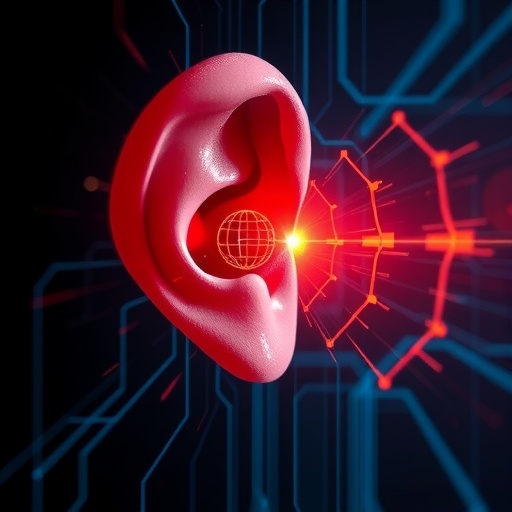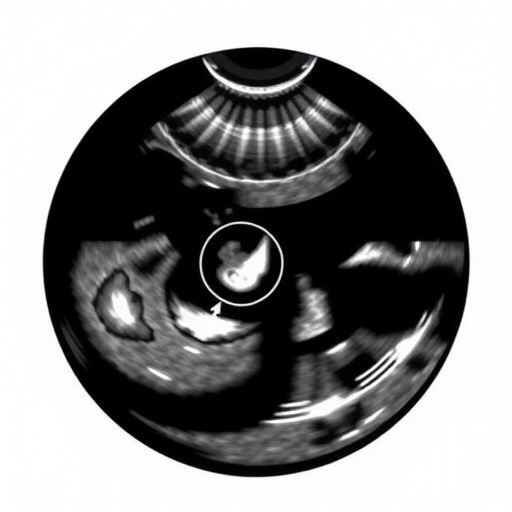In the relentless pursuit of advancing forensic identification methods, a groundbreaking study has emerged that may redefine the way biometric data is utilized in legal and investigative fields. Researchers Wang, Zhao, Yang, and their team have pioneered an innovative approach that leverages the unique anatomical structure of the human ear for biometric recognition, kinship verification, and forensic applications. Their work, published in the International Journal of Legal Medicine in 2025, harnesses the power of deep learning algorithms to quantify ear similarities with unprecedented precision, illuminating new pathways for both individual identification and familial link assessments.
For decades, biometric identification has primarily relied on fingerprints, iris patterns, and facial features, leaving other potential biometric markers relatively unexplored. The human ear, despite its distinctive morphology and relative stability over time, has often been overlooked in forensic contexts. This study repositions the ear as a viable biometric modality, providing robust analytical techniques to extract and quantify subtle details from ear images. Such an approach not only enhances the accuracy of personal identification but opens doors to verifying genetic relationships—a crucial aspect in forensic investigations involving kinship.
The core innovation presented by the research lies in the development of a deep learning-driven ear similarity quantification framework. This framework employs convolutional neural networks (CNNs) tailored to analyze the intricate contours, ridges, and helix structures of the ear. By training on large datasets comprising diverse ear images, the model learns to capture distinctive features that are resilient to common challenges like varying lighting conditions, partial occlusions, and pose differences. This robustness ensures that ear biometrics can be reliably extracted even under suboptimal imaging scenarios common in practical forensic environments.
One of the most striking aspects of this work is its dual focus: not only is the ear used as a standalone biometric identifier, but the system is also capable of performing kinship verification. Kinship verification attempts to establish biological relationships based on phenotypic similarities visible in biometric markers. Ear structures, influenced by genetic factors, provide a promising avenue for such analyses. The deep learning system quantifies resemblances between ear images with a fine granularity that surpasses conventional facial kinship verification methods, offering a novel tool to authenticate familial ties in forensic casework.
Historically, ear biometric research suffered from limited datasets and insufficient computational techniques to fully exploit its potential. The team behind this study overcomes these limitations through meticulous data curation and cutting-edge neural network architectures. The dataset’s diversity ensures that the model generalizes well across population groups, which is vital for forensic applications spanning different ethnicities and ages. Such comprehensive coverage also mitigates biases that have plagued prior biometric systems, thereby ensuring fairness and equitable performance.
Deep learning’s capacity for hierarchical feature extraction plays a pivotal role in the success of this ear biometric system. Initially, the convolutional layers detect rudimentary shapes and edges corresponding to ear components like the lobule and antihelix. Successive layers integrate these features into complex representations, effectively creating a biometric signature unique to each individual. This layered processing enables the model to differentiate between subtle anatomical variations that traditional handcrafted feature descriptors might miss, pushing forensic identification precision closer to an ideal threshold.
Moreover, the proposed method integrates a similarity metric learning component that quantifies the degree of resemblance between two ear images. This metric is entrenched in a learned embedding space where distances correspond to biometric similarity scores, meaning that genuine matches yield smaller distances while non-matches project higher separations. This approach enhances interpretability and provides forensic experts with clear probabilistic measures to support their conclusions during investigations.
In forensic contexts, the practical implications are profound. The ability to ascertain identity from ear images can be crucial when other biometric modalities are unavailable or compromised. For example, in scenarios involving partial remains or low-resolution surveillance footage where facial features are indistinct, ear biometrics can serve as an additional verification layer. The research team’s system also holds promise for missing person cases, where kinship verification through ear similarities can aid in resolving familial connections and identifying unknown individuals.
Additionally, the system’s potential extends beyond forensic science to include security and surveillance applications. Airports, border control, and law enforcement agencies could implement ear biometric systems for identity verification, leveraging deep learning-driven accuracy that rivals or complements existing technologies. The non-invasive nature of ear imaging also makes it suitable for covert identity verification, reducing privacy concerns inherent in more intrusive biometric modalities.
Critical to the system’s efficiency is its adaptability to varying image acquisition conditions. Unlike facial recognition, which can be heavily impacted by facial hair, expressions, or makeup changes, the ear is less prone to such temporal alterations. The model’s training incorporates augmentation strategies like rotation, scaling, and partial occlusion simulation, promoting resilience to real-world variability. This ensures that the ear biometric framework maintains operational integrity across diverse use cases.
Furthermore, the study explores the genetic underpinnings of ear morphology and its correlation with kinship verification accuracy. By analyzing a broad spectrum of related individuals, the researchers demonstrate that their deep learning framework is sensitive to heritable traits, making it a powerful complementary tool to DNA analysis. This synergy between biometric imaging and genetic theory opens up new interdisciplinary research avenues, potentially streamlining forensic workflows and reducing dependency on costlier and time-consuming molecular methods.
Ethical considerations also surface in the deployment of ear biometrics. The research addresses concerns around surveillance and consent by emphasizing transparent algorithmic processes and advocating for stringent regulatory frameworks. The potential misuse of biometric data calls for responsible technology stewardship, especially as ear biometrics gains traction across public and private sectors.
To foster further adoption and validation, the authors suggest integrating the ear biometric system with multi-modal biometric platforms. Combining ear patterns with fingerprints, iris scans, or facial data can create comprehensive identification systems that are robust against spoofing and adversarial attacks. This multi-modal fusion could revolutionize forensic identification protocols, making them more resilient and reliable.
In summary, this pioneering research into ear biometrics heralds a paradigm shift in forensic identification and kinship verification. By deploying sophisticated deep learning techniques to exploit the unique physical characteristics of the ear, Wang, Zhao, Yang, and their colleagues chart a course toward more accurate, efficient, and ethically responsible biometric systems. Their contributions are poised to invigorate forensic sciences, offering law enforcement and judicial systems novel tools to tackle identity and kinship verification challenges with heightened confidence and scientific rigor.
As the field progresses, continued efforts to expand datasets, fine-tune algorithms, and address privacy concerns will be essential. The integration of ear biometrics promises not only to augment existing forensic methodologies but also to inspire fresh innovations at the intersection of biological sciences, artificial intelligence, and legal medicine.
Subject of Research: Ear biometrics for forensic identification and kinship verification using deep learning approaches
Article Title: Ear biometrics in forensic identification: from ear similarity quantification to kinship verification driven by deep learning approaches
Article References:
Wang, X., Zhao, Z., Yang, Y. et al. Ear biometrics in forensic identification: from ear similarity quantification to kinship verification driven by deep learning approaches. Int J Legal Med (2025). https://doi.org/10.1007/s00414-025-03636-6
Image Credits: AI Generated
Tags: anatomical structure of the earbiometric data utilizationdeep learning algorithms in biometricsdeep learning in forensicsear biometrics technologyear image analysis techniquesfamilial link assessmentsforensic identification advancementsinnovative biometric recognitionkinship verification methodslegal medicine advancementsunique ear morphology applications





